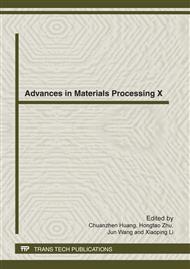p.673
p.679
p.685
p.690
p.696
p.702
p.709
p.715
p.721
Nano-Indentation Simulation Study Based on Parallel Computing
Abstract:
This method of parallel computing into nanoindentation molecular dynamics simulation (MDS), the author uses a nine-node parallel computer and takes the single crystal aluminum as the experimental example, to implement the large-scale process simulation of nanoindentation. Compared the simulation results with experimental results is to verify the reliability of the simulation. The method improves the computational efficiency and shortens the simulation time and the expansion of scale simulation can significantly reduce the impact of boundary conditions, effectively improve the accuracy of the molecular dynamics simulation of nanoindentation.
Info:
Periodical:
Pages:
696-701
Citation:
Online since:
April 2012
Authors:
Keywords:
Price:
Сopyright:
© 2012 Trans Tech Publications Ltd. All Rights Reserved
Share:
Citation:


